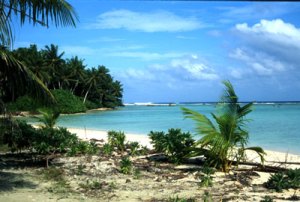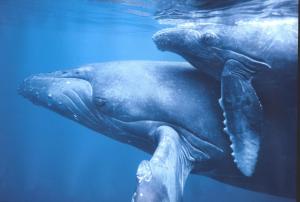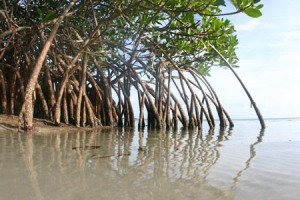
Palmyra Island
In a surprising new development, George Bush and members of his administration have been given the opportunity to oversee one of the largest conservation programs in history.
If launched, the program could protect vast stretches of U.S. territorial waters from fishing, oil exploration and other forms of commercial development. The initiative could also create some of the largest marine reserves in the world — far larger than national parks like Yellowstone or the Grand Canyon.
While the details of the possible initiative are still “under review,” the idea seems to be drawing strong supposrt from those who have typically been very critical of the Bush camp and its policies.
Conservationists say that White House Council on Environmental Quality officials invited a small number of ocean advocates to an unusual, closed-door meeting to discuss the idea last year. The CEQ asked them to help identify potential reserves in waters within the United States’ “exclusive economic zone,” which extends 200 nautical miles out from the mainland and U.S.-owned islands around the world.
The idea, says Jack Sobel, a senior scientist for the Ocean Conservancy, was to highlight areas where President Bush could create “marine monuments” under the Antiquities Act of 1906. It seem s that political conniving may have its uses, because this law gives the president broad powers to protect areas of “historic or scientific interest” without congressional approval.
The groups eventually developed a “wish list” that included about 30 potential marine monuments. They ranged from small reserves in U.S. coastal waters to vast swaths around U.S. territories in the Central Pacific. The candidates stretched “from Bar Harbor, Maine, to Dutch Harbor, Alaska” and beyond, says Jay Nelson of the Washington-based Pew Environment Group.
The final list, which has now been shortened to about 5 by the White House, has not yet been released to the public. However, some of the leading nominees have been identified.
The biggest proposal is the protection of more than 600,000 square miles around a number of small, mostly uninhabited islands in the Central Pacific. The islands — including Palmyra, Howland and Baker — are surrounded by biologically rich coral reefs and are home to huge seabird colonies. If implemented, the reserve would be among the largest in the world and about three times as large as the Hawaiian monument.
Another proposal calls for protecting more than 100,000 square miles of notoriously rough waters around the Northern Mariana Islands, in the Western Pacific. The area includes the 36,000-foot-deep Marianas Trench.
What is most astounding is the possibility of Bush becoming the “Teddy Roosevelt of the Seas,” a title that he would ultimately earn if the programs succeed. A bit late in his career as commander-in-chief, the Bush programs would aim to create a “blue legacy,” most likely to balance out the other rather unfortunate trails that Bush will leave behind when he leaves office in January of next year.
Better late than never, right?
Filed under: 1 | Tagged: antiquities act, conservation efforts, council on environmental quality, george w. bush, marine reserves, white house | Leave a comment »










